5 easy games to boost your baby’s development—and have fun too
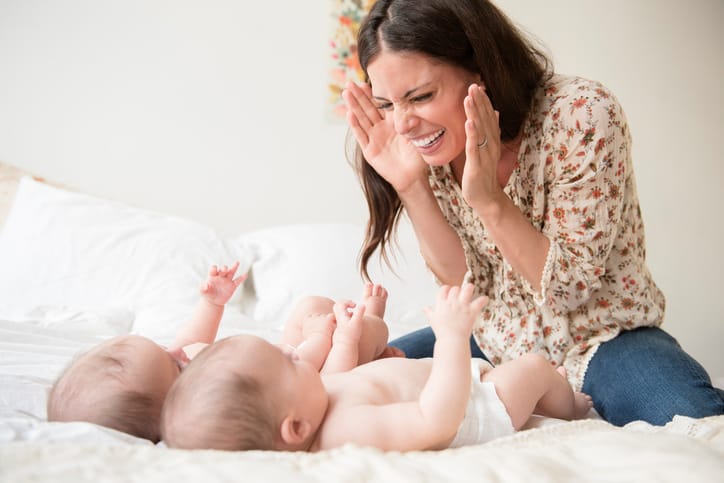
You'll never forget the first time your child initiates a game with you.
Table of Contents
I’ll never forget the first time my infant daughter initiated a game with me. She was on her tummy with a block just out of her reach and had been there for a couple minutes. My mind had started wandering, planning out my to-do list, and all of a sudden, she rolled over, reached out and had the block in her hands!
Then she looked at me—and I swear—she was trying to hand it to me. It was exhilarating. We passed the block back and forth a few times… and then… a new worry crept in—what should we play next?
As your little one starts interacting with you more, you may feel new pressure to help your baby thrive in their environment. And sometimes, it’s hard to know what to do. Luckily, the fact that you’re feeling this at all means you’re already doing a great job.
5 easy baby development games
Here are some simple ways to play that are low impact for you, and have a high impact on the development of your 6- to 9-month-old:
1. In the palm of your hand
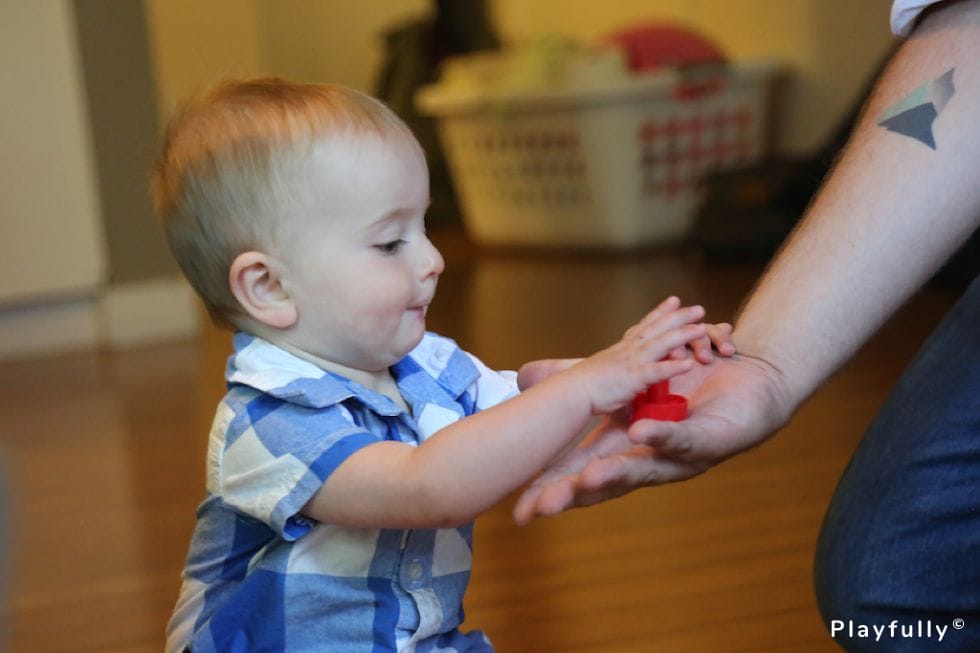
- Sit or lie down across from your baby
- Pick out a small toy that fits in your hand and show it to your child
- While they’re watching, hide it in one of your hands, then show both of your closed fists to your baby
- Ask, “Where did the toy go?” while hinting at the hand it’s in by looking at or shaking your hand slightly
- Pause to see their reaction, then open your hand and say, “Here it is!”
What this helps with: Object permanence, pairing gestures with sound, shared attention
As your child approaches nine months, he starts to understand object permanence—that objects are still there even when they’re not visible. Playing this game introduces the concept, and when you ask where the toy is, your glances and subtle movements help him practice shared attention.
See if you notice any attempts to gesture at the object, or babble in response to your question. Learning to pair gestures with sounds is an important language milestone.
2. Eye on the ball
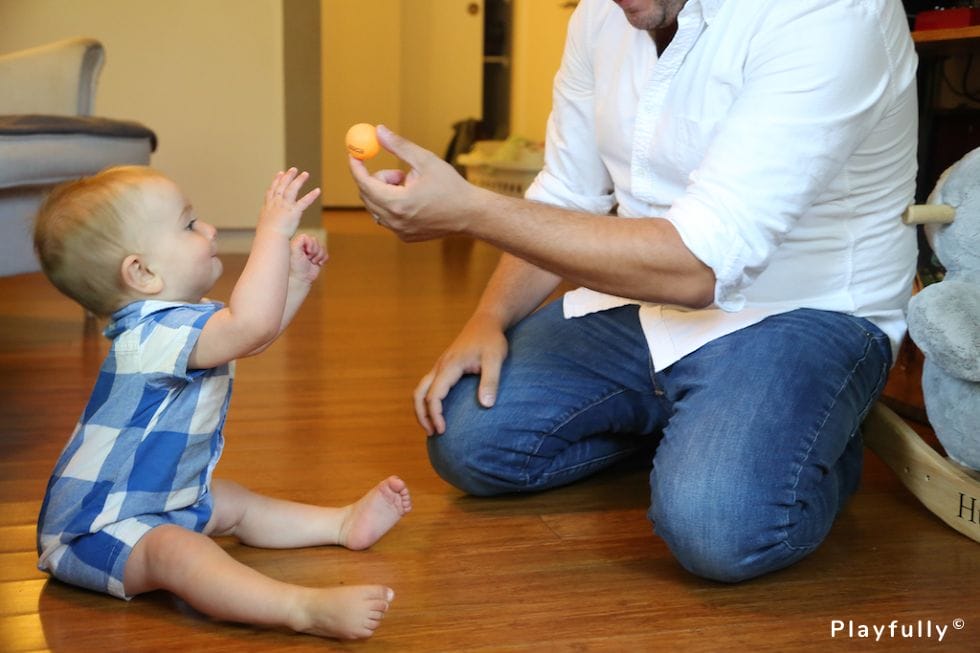
- Get a small ball and sit or lie down near a wall with your child
- Show them how you can bounce the ball on the floor and have it rebound against the wall to bounce back to you
- Say “Boom” when the ball hits the floor
- Watch their reaction and repeat several times. Let them have a turn, continuing to say “Boom”
- Finally, bounce the ball, but be silent. See if they try to say “Boom” and applaud all attempts
What this helps with: Visual development, tracking objects, imitating syllables
Your child is learning to track moving objects and predict where they will land. See if he looks in the direction of the ball’s movement. He’s also learning to imitate the sounds others speak. See if he tries to babble or imitates you, remembering that his babble may only partially match yours. For example, he may say “Boo.”
Learning to say only one syllable at a time takes more muscle control and attention than a constant string of babbling.
3. Just out of reach
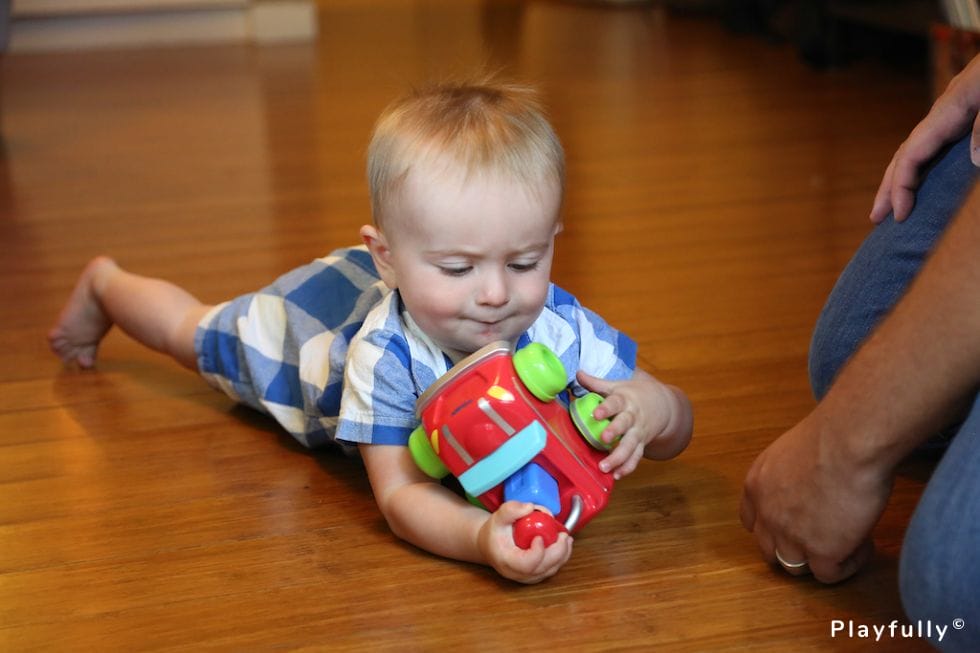
- Place your child on their tummy, sit or lie down next to them, and show them a toy
- Slowly move the toy out of his line of sight in an arc like you’re drawing a circle around them
- Wait to see if they turn to find the toy. Cheer them on and remind them where it is by tapping or rattling it
- As your child gets more mobile, move the toy up onto a different level (ex: a stair or a low stool) and watch as they tries to reach it.
- Repeat in different directions
What this helps with: Strength, coordination, motor planning, pre-crawling skills
This activity helps your child build the strength and coordination for crawling and future physical milestones. When you move the toy around them in an arc, watch to see if they pivot on their tummy to get it. As you move the toy in different directions, let them problem solve and practice various movements—pivoting, reaching out, pulling themselves up, etc.—before you offer assistance.
4. My face, your face
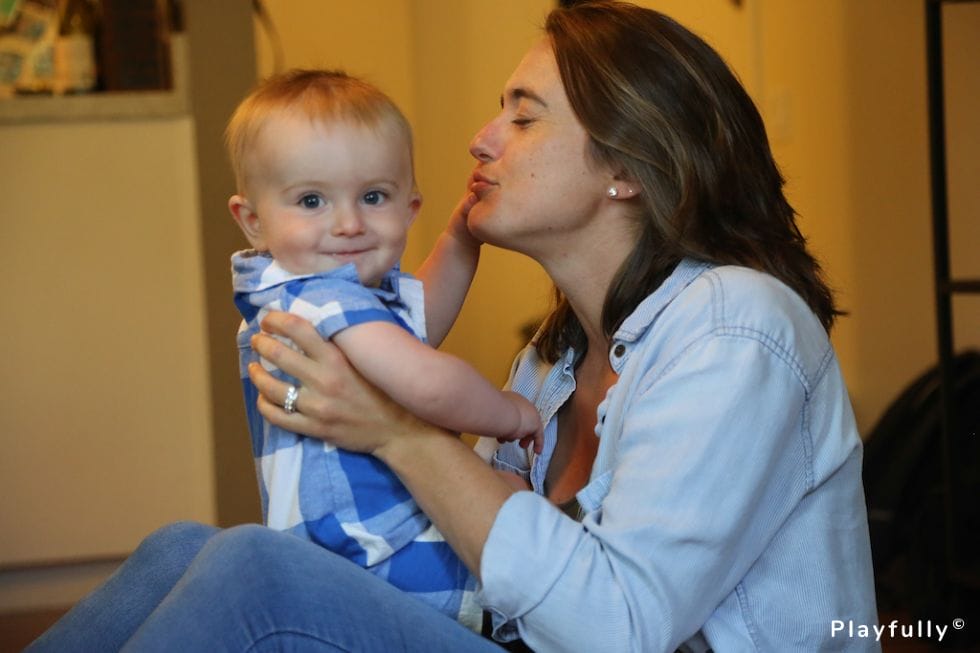
- Sit or lie down next to your baby
- Start singing the song “If You’re Happy and You Know It.” When you get to lyrics that suggest movement, act out that movement with him (ex: when you say, “clap your hands,” clap his hands together).
- Add lyrics like “touch your nose,” “touch your cheeks.”
- Then, switch it to “touch MY nose,” “touch MY cheeks” and help them touch your face.
What this helps with: Vocalizing in response to music, sense of self, bonding
As you sing, see if your child attempts to vocalize with you. They may start to recognize songs and will show you by turning to you, flapping his arms and legs with excitement, smiling, laughing, and more. When you differentiate the times when they’re touching your nose versus their own nose, you’re helping them recognize that they are a separate person from you.
5. Narrator
- Watch your child as they play independently. Hold back and don’t intervene for a couple minutes.
- Narrate what you see them doing. Use simple sentences and repeat keywords, pointing to the object as you name it. For example, “You rolled the ball. Red Ball.”
- Observe their responses—physical and vocal. Try to tell what’s catching his attention. Are they babbling more than he used to? What do they seem most interested in?
What this helps with: Vocabulary development, bonding, empathy for your child
When you narrate what your child is doing, labeling the objects they’re interacting with helps with vocabulary development. Taking time to step back and observe focuses all your attention on them, which they will love. You will develop greater awareness of the things they like, dislike, find easy and find hard, which will result in greater empathy for your child.
This piece was originally published May 17, 2018. It has been updated.


































